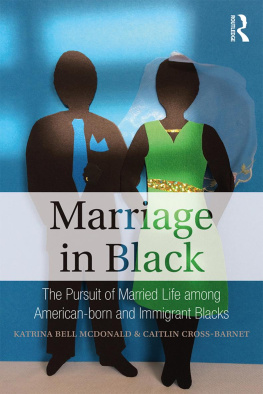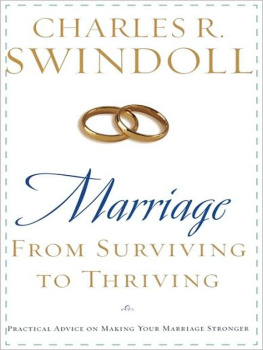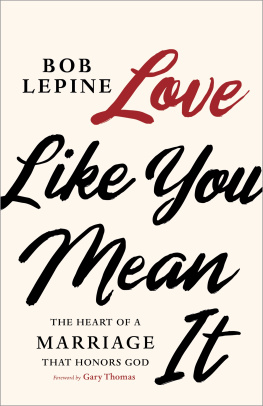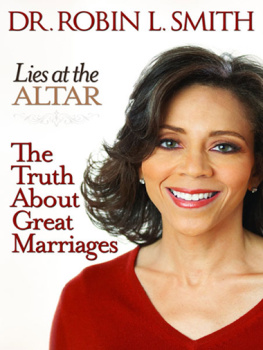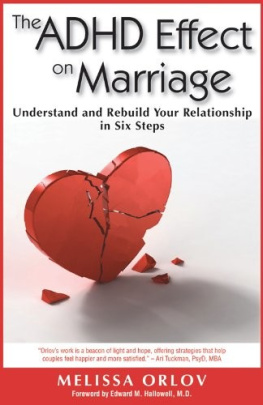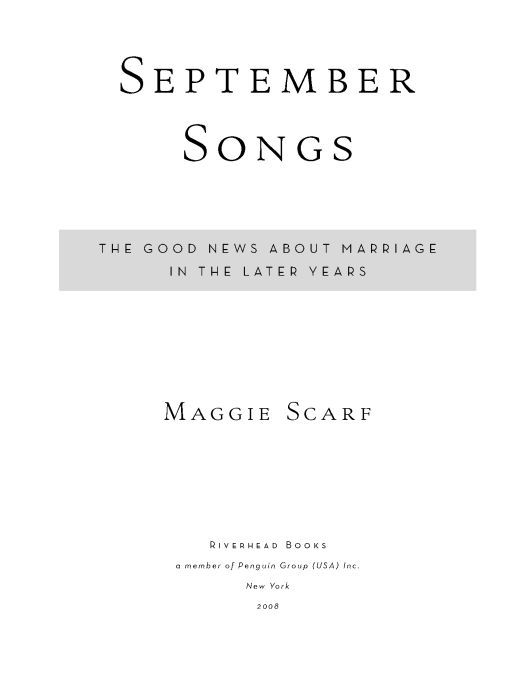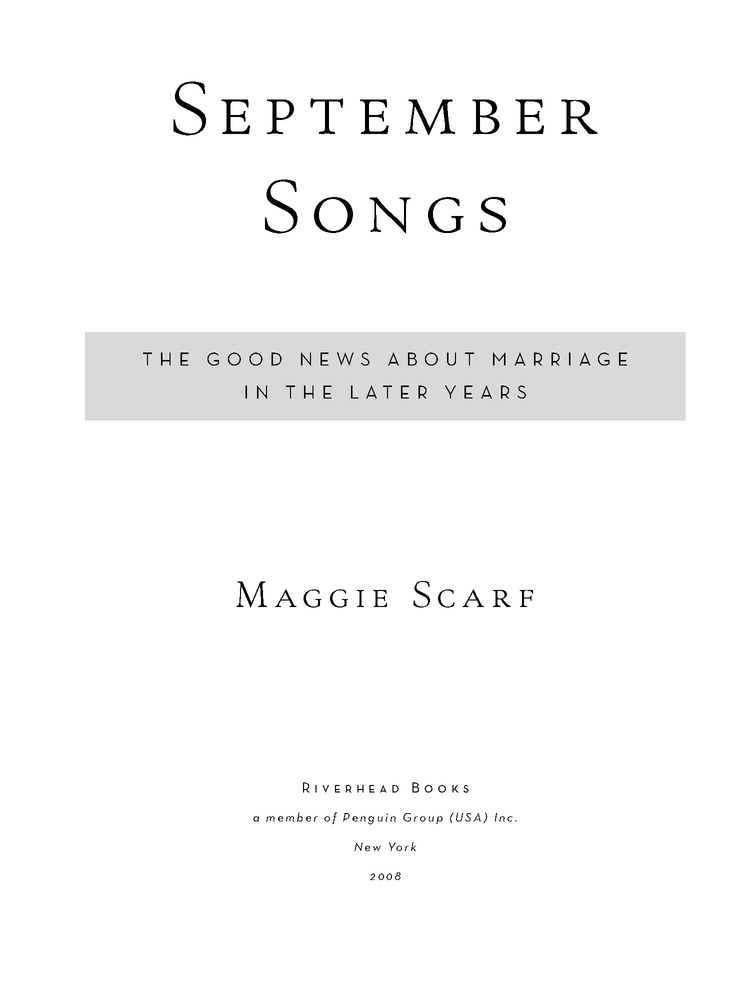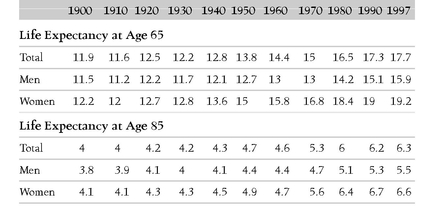Table of Contents
ALSO BY MAGGIE SCARF
Secrets, Lies, Betrayals: The Body/Mind Connection
Intimate Worlds: How Families Thrive and Why They Fail
Intimate Partners: Patterns in Love and Marriage
Unfinished Business: Pressure Points in the Lives of Women
Body, Mind, Behavior
FOR HERB, ALWAYS
AUTHORS NOTE
The couples whose interviews have been used in these pages have agreed to let their stories be told, with minor changes as far as identifying details are concerned (names, professions, names of family members, geographical location in some instances, etc.). The life narratives described here are therefore factual, aside from the omission or change of such unnecessarily specific information.
The best is yet to be,
The last of life, for which the first was made....
ROBERT BROWNING
PREFACE
In the course of the twentieth century something akin to a miracle has occurred: in this brief span of evolutionary time, thirty years of life have been added to normal human life expectancy. For the first time in the history of our species, the majority of people born in the Western world can now expect to survive into old age. As social scientists Laura Carstensen and Susan Charles have noted in an important paper entitled Taking Time Seriously, The enormity of this advance is unprecedented. A new stage has been added to the life-cycle.
These bonus years of life have been bequeathed to us not only by the dazzling array of medical advances achieved in the mid-twentieth century, such as the Salk vaccine, antibiotics, etc. Less glamorous (and therefore less trumpeted) has been the fact that this bequest of added years has resulted from the introduction of sewers and improved sanitation, which in turn suppressed waterborne diseases such as typhoid fever and dysentery. These and a myriad of other developments have served to change the natural course of the life span, adding more years to the average persons lifetime than had been gained during the previous millennia of human history.
A glance at the mortality statistics that existed at the outset of the twentieth century will quickly underline this point. These figures reveal that the average persons life expectancy at that time was a brief 49.2 years. Indeed, half of all children born in the early 1900s would perish before they reached the age of five, largely due to infectious diseases such as diphtheria, influenza, infectious diarrhea and the host of other illnesses that preyed upon the very young.
This stark child-mortality statistic stands in bold contrast to the fate of children born later in the century, who would not only survive the vulnerable early years of life but would live on into the ripe years of mature adulthood. By the end of the twentieth century, the average mans life expectancy at birth was 73.6 years, and the average womans life expectancy at birth was 79.4 years. These numbers averaged out at 76.5 years for both sexes in the year 1997 (and that figure has been climbing slowly ever since). In what might be seen as the twinkle of a historical eye, the human life span had become almost three decades longer.
LIFE EXPECTANCY BY AGE-GROUP AND SEX, IN YEARS, 1900-1997
LIFE EXPECTANCY BY AGE-GROUP AND RACE, IN YEARS, 1997
THE NOON OF LIFE?
In the year 1931 the great Swiss psychologist Carl Jung wrote: The age of forty is the noon of life. During that midlife period, he stated, we are in possession of our full adult powers, but each of us is conscious that our personal sun is entering a new meridian. We cannot live the afternoon of life according to lifes morning.... [F]or what was great in the morning will be little at evening, and what was true in the morning will at evening have become a lie.
Much as I can appreciate the beauty of this statement, it is sadly out-of-date in the early part of the twenty-first century. At the present time, our ideas about what is middle adulthood are far more fluid. A recent U.S. Census Bureau report states that many people now in their early sixties, when queried about what stage of life they are currently in, will say that they are in the midlife period. To be sure, given the phenomenal changes that have occurred in human life expectancy, what is meant by middle age may now be being stretched out like the saltwater taffy that, as a little girl, I used to buy on the Atlantic City boardwalk.
Shall we call this added phase of life midlife-plus or later adulthood? The very question makes me think of a quote from a sixty-six-year-old woman I interviewed for my work on couples over fifty (see chapter 9). She is someone Id talked with twenty years earlier for my book on marriage, Intimate Partners. The intervening years have touched her lightly, for I found her to be as trim and pretty as she had been those many years earlier.
Here is what she said, at age sixty-six, about the whole idea of being elderly. When you read an article that says: Elderly seventy-year-old man swerves off the road, or Elderly woman of sixty-five held up in parking lot, I say to myself, Oh my God! Thats not my definition of elderly. Okay, the years between fifty-six and sixty-six are now gonethey went like smoke in the wind. So my definition of elderly is now seventy-six instead of sixty-six. And its going to advance the further along I get. She laughed. Thats not to say I would like to go back and relive the early years, but that maybe I would like to have ten years of being sixty-six. And maybe ten years of being sixty-seven and ten years of being sixty-eight.... I just wish there were some way of slowing the clock down.
A couple of decades earlier, during the time of our first set of interviews, this woman and her husband had been dealing with some significant marital and family problems. But now some twenty years had gone by, and I found both members of the pair to be much more relaxed and contented with each other, even serene. They, like a number of over-fifty couples I interviewed in the course of my research, were finding these older adult years to be a very good time of their lives. This was not what Id expected when I began my research on this relatively unexplored stage of the life cycle; and, like Dorothy in The Wizard of Oz, I felt myself being whirled around and around for a while until I touched down in a whole new place, a world that was full of zest, ardor and surprises.
SEPTEMBER SONG
It was the fall term of 2005, and I was standing in the lecture room of Yale Universitys Whitney Humanities Center, where I was a visiting fellow for the academic year. With me was the well-known composer Martin Bresnick, who was peppering me with a fusillade of intelligent, incisive questions about the project on couples over fifty in which I was involved:


